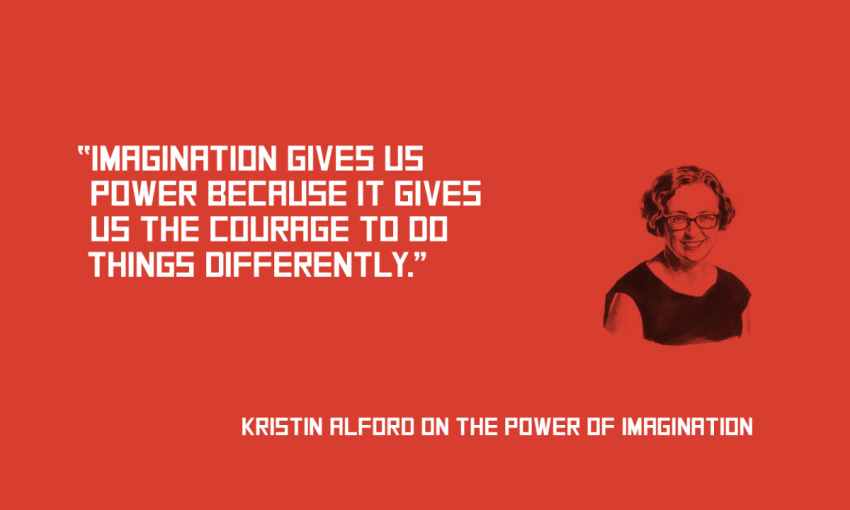The University of South Australia's Museum of Discovery is imagination made physical.
Kristin Alford on the power of imagination
Imagination unlocks difference. There is power in offering a glimpse into ideas that have been coaxed beyond any facsimile.
There is a tiny detail in the painting Flow Landscape by Sam Leach that makes up a full wall of the Futures gallery at MOD. – a new futuristic museum of science, art and innovation at the University of South Australia. Amongst the gums and misty landscape there is a rocket ship nestled in the clearing. In looking closely you feel as though you might fall into another world.
The possibilities sitting within this tiny fragment of Sam’s painting reminds me just how much imagining was involved in the design of that one exhibit.
Sam and I began a conversation about an arts science residency early in the development of MOD. Noting his portrait of researcher Prof. Srini, we began to think about an exhibit that would explain the insights from how budgerigars navigate space.
The first iteration had us fashioning holographic budgies that would hatch in 3D and then fly to join a flock on the gallery walls, interacting with visitors based on movement sensors and real-time digital animation. The second iteration included landscape elements based on Sam’s portfolio. The third iteration included a bird’s eye view of the landscape that needed to be experienced by climbing a ladder to the roof of the installation. The favoured iteration included a human-sized research tunnel with the same visual stimuli as for a bird in Srini’s lab.
We designed these iterations while looking at floor plans, trying to conceive the size of the room. Site visits played tricks on the eye as the size of the galleries morphed with the build of walls and doors and infrastructure. We worked through multiple versions of sketch-up models as we tested different elements throughout the space. We changed soundscapes and added birdsong. We added illusions and took away lighting effects as we sought to match what we had envisaged.
This process of imagining, and reimagining was repeated in each of our gallery spaces. Taking an idea and transforming it into something that could challenge and delight, entice people to visit and stay and explore.
Now we are repeating the cycle for our second exhibition, and our third. Seeking to turn tiny fragments of conversations with researchers and artists into whole new worlds. To work firstly without constraints and push the boundaries of what is possible so our visitors see things they’ve not seen before.
And we repeat that cycle of imagining and reimagining in the way we include Aboriginal ways of knowing that hint at a new way of being Australian. In the way we design learning experiences for young adults that sit outside traditional formal education processes. In the way we provide clues for creating work futures rather than relying on old metaphors of disruption.
Imagination gives us power because it gives us the courage to do things differently. To continue to see things in a new light. To give our visitors the power to imagine themselves differently.




